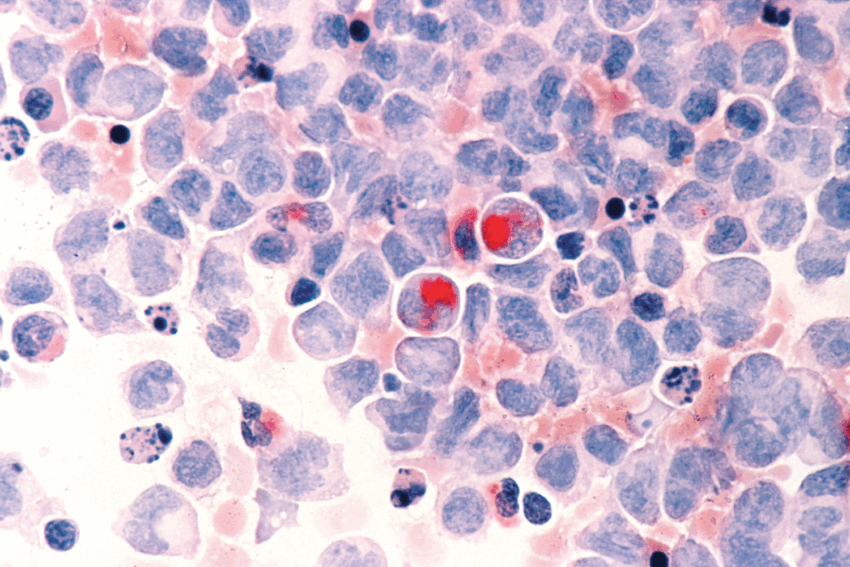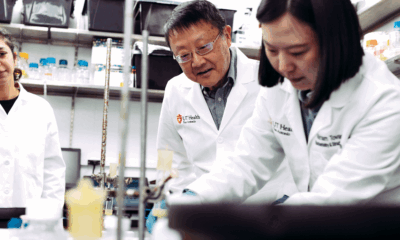Gene-mutation pathway discovery paves way for targeted blood cancer therapies

Mays Cancer Center Annual Report
About 30% of people with myeloid malignancy diseases have a mutation in a gene called tet methylcytosine dioxygenase 2 (TET2). This gene is known to have a tumor-suppressive function.
“There currently is no specific, targeted treatment or therapy for these TET2-mutated cancers. This pathway opens a door for targeted therapeutics and targeted prevention,” said Mingjiang Xu, PhD, a molecular medicine professor at The University of Texas Health Science Center at San Antonio, and the co-primary investigator for the study.
When TET2 is mutated and not working properly, malignant cells can grow out of control. Mutation of this gene was pinpointed years ago as a culprit in blood cancers such as chronic myelomonocytic leukemia, acute myeloid leukemia and myelodysplastic syndromes. But the mechanisms behind how TET2 genetic changes led to disease remained a mystery — until now.
The study published in Nature is the first to explain the pathway of TET2’s enzymatic activity that is essential for its tumor-suppressing function. The work is a collaborative effort between UT Health San Antonio scientists and University of Chicago scientists led by co-primary investigator Chuan He, PhD.
About 15 years ago, Xu was one of the first scientists to discover that the TET2 mutation is sufficient to cause myeloid malignancies in mouse models. His pioneering work led to further research on TET2 and its tumor-suppressing function. After this discovery, dozens of labs worldwide sought to understand the underlying mechanisms. However, according to Xu, other scientists hit a wall by focusing only on TET2’s effect on DNA.
Next Step: Targeted therapies
Xu said that the findings from this study could be transformational in discovering treatments and preventive measures for people with TET2 mutation-related diseases. The next steps will be working on molecular inhibitors that can disrupt this pathway and lead to highly targeted therapies.
About a decade ago, researchers discovered that about 10% of people aged 70 and older with a genetic mutation (including, but not limited to, TET2 mutation) develop clonal hematopoiesis of indeterminate potential (CHIP).
“These individuals have a significantly higher possibility of developing myeloid cancer and cardiovascular diseases. This makes our findings even more important because the aging population is growing, and these individuals need preventive interventions,”Xu said.
Xu said this study is a turning point, potentially leading to the exploration of several players within this pathway that could be targets for therapeutic intervention.
This groundbreaking work could not be done without the collaborative efforts of his team members from the departments of Molecular Medicine and Cell Systems and Anatomy and from the University of Chicago team, said Xu.


